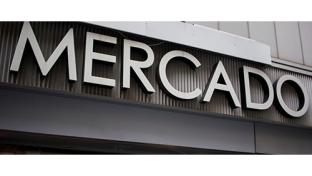The Importance of Food for Multicultural Consumers
The U.S. demographic landscape is transforming. Cultural diversity is increasing generation after generation, with the youngest, Generation Alpha, being the most culturally diverse cohort in history, according to census data.
This growth of multicultural populations has shaped and is continuously evolving food culture and the American taste palate. Corona, for example, is a Mexican beer brand that leads the American market in both consumer awareness and consumption. Avocados are now the new health craze, bringing this Latin fruit into popularity. Also, the prevalence of sushi, an Asian cuisine, has increased over the years. Through food, cultural duality is both celebrated and preserved.
[RELATED: How Grocers Can Embrace Latino Cultural Influence]
This article presents Collage Group’s consumer research data to unveil the dynamic demands of this growing multicultural market. The goal is to provide actionable insights for players in the food industry, empowering them to effectively cater to the diverse needs of the American population.
Multicultural Consumers Seek Foods and Recipes Rooted in Heritage
For 58% of multicultural Americans, food plays a crucial role in connecting them with their cultural heritage. This sentiment is particularly pronounced among Asians (65%) and Hispanics (61%). Consequently, these consumers actively seek food products and brands that facilitate this connection for the preservation of their heritage.
In this pursuit, multicultural individuals are increasingly turning to digital platforms. Specifically, 43% of multicultural Americans use social media to explore new recipes, while 32% rely on blogs and websites. Notably, Hispanic consumers are at the forefront of this trend, with 50% using social media to discover fresh cooking inspiration, compared with 37% of white consumers.
Supermarkets Are Crucial to the Preservation of Cultural Heritage
With two-thirds of Americans purchasing their food items at Walmart, it’s clear that supermarkets play a pivotal role in preserving the cultural heritage of a diverse market.
Multicultural consumers practice active diligence in searching for recipes that celebrate their cultures, to pass these dishes on to their children, and to gain an edge on being the “host with the most.” As discerning shoppers, they increasingly expect grocery stores to stock what they need. This has given rise to powerful ethnic grocers like Fiesta Supermarket and Patel Brothers. These specialize in catering to the rich and diverse palates of the U.S. consumer.
High-Quality, Ethically Sourced Global Foods Are in Demand
Due to the significant role of supermarkets and food in preserving heritage and acting as a guardian of cultural traditions, quality is of the utmost importance. This inclination is evident in the health-conscious choices made by multicultural consumers, who consider these decisions vital for managing their well-being and a means of accessing good food. For instance, 52% of Asian Americans value fresh ingredients, with 38% seeking foods that have high nutritional content.
Further, while multicultural consumers enjoy cooking authentic meals from scratch, they also recognize and appreciate the need for tricks and shortcuts to help them prepare the staples that they treasure.
For example, Asian Americans value recipes that are easy to follow and time-efficient. Although Asian Americans want to cook dishes tied to their heritage, this doesn’t necessarily mean cooking them from scratch.
[RELATED: Consumers Ditch From-Scratch Shopping for Easy Meal Solutions]
Additionally, Hispanic parents may cook using raw ingredients more often than other ethnicities, yet they’re as equally likely to seek easy-to-prepare meals as other consumer groups.
As a result, multicultural consumers need and depend on CPG global food products. While seeking such items, however, they closely scrutinize quality, authenticity and ethical sourcing.
Supermarkets Must Embrace Cultural Food Preferences and Diversity
Supermarkets must be keenly aware of the experience they create. Multicultural consumers seek stores that welcome diversity by providing global food staples. For instance, Hispanics, especially the unacculturated segments, look for signage in Spanish. Other ethnic groups, such as Asian and African consumers, seek acknowledgement and cultural support. Supermarkets can provide this support by removing the global food aisle and instead integrating diverse food products throughout the entire store.
Global foods are already starting to make their way into the central aisles of supermarkets. Providing easy access to global foods is an action that connects with all consumers. For instance, almost half of the U.S. population admits to being adventurous eaters, and more than half loves trying new foods. This preference is particularly pronounced in multicultural consumers and the younger generation.
Embracing Multicultural Food in 4 Steps
Based on the consumer research data shared in this article, Collage Group has distilled four key steps for supermarkets to adopt multicultural food offerings and cater to the needs of diverse consumers.
- Ensure that products are high-quality and nutritious, fitting the lifestyles and preferences of multicultural consumers.
- Be mindful of ethical sourcing and understand its importance for connecting with the values of multicultural consumers.
- Provide a diverse retail experience that acknowledges language needs and supports language differences.
- Instead of isolating global foods, integrate them throughout the entire supermarket to enrich the diversity of offerings in every aisle.
[Never miss a story – sign up for Progressive Grocer's FREE Daily newsletter]
Supermarkets Must Achieve Cultural Fluency to Win in Multicultural America
As the diversity of America increases, consumers with a more fluid cultural identity are taking center stage. Other factors, such as multiple ethnic and racial backgrounds, gender, sexual identity, lifestyle or location, are becoming important facets of the various ways in which Americans identify. These intersections are creating new needs and tastes. Therefore, supermarkets should employ what Collage Group calls the “halo effect.” This is the effective engagement of consumer segments outside the target cohort. By doing so, supermarkets can better provide for multicultural consumers and beyond.







